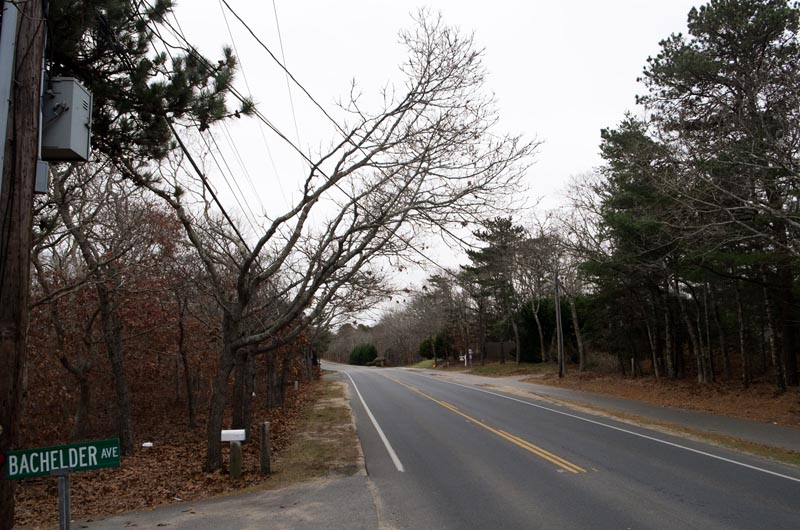For many years, an otherwise smooth drive from Edgartown to Vineyard Haven has been punctuated by a series of pesky bumps.
The roadway’s unevenness is caused by cast iron manhole covers, which are positioned within the travel lane causing some to swerve to avoid them.
Now, as part of an extensive plan to upgrade and resurface the 6.5-mile stretch of road that spans three towns and is a main Island thoroughfare, officials are proposing to relocate the concrete catch basins that underlie the road to the grassy shoulder. The project will be funded through the Transportation Improvement Program, a federal program that facilitates improvements to highway, bridge and transit infrastructure.
Meeting at the Martha’s Vineyard Commission this week, the joint transportation committee voted to spend the state funds to relocate the drainage structures in the three towns that share the road — Oak Bluffs, Vineyard Haven and Edgartown. The plan is to use the next two years of TIP funds, which total $1.03 million, to replace the existing basins with new leaching pits on the north side of the road.
“Hopefully [the funds] will cover the entire road,” said Edgartown highway superintendent Stuart Fuller in a phone call to the Gazette on Thursday. “If not, it will get a significant portion of it.”
The project would represent the first phase of a multi-year effort to resurface the roadway and possibly restructure it. The road was first paved in 1925 and significantly widened in the late 1960s. It was widened again in the late 1990s, as part of a controversial modernization project, to a uniform width of 28 feet. At the time, the road was in a state of disrepair in some places and was a variety of widths along its length. Officials said widening would allow mopeds to travel more safely along the busy roadway.
Among the critics of the redesign were members of the Martha’s Vineyard Garden Club, who questioned the impact of the changes on the rural road.
“We believe that widening the road will further destroy not only the scale but also the remaining attractiveness of the road, important for those of us who live here, but equally for tourists seeking a respite from their overscaled and regimented urban world,” wrote Alvida R. Jones, who was president at the time, to the Tisbury selectmen in April of 1997.
When the road was widened, the drainage basins, which once stood at the side of the road, were not relocated to conform to the road’s new width. As a result, manhole covers were installed in the travel lane. Originally, they were designed to be flush with the road, but over time, conditions changed. Relocating the drainage system will allow any number of future changes to the road’s width, Mr. Fuller said.
Some have suggested that the road also be narrowed now, to reinstate a rural aesthetic.
“There has been some discussion about [narrowing the road] but the road has to be functional for all users, including mopeds, cars, bicycles and trucks,” Mr. Fuller said. The joint transportation committee has also discussed widening the bike path from eight to 10 feet.
“There are a lot of things to look at to improve the road,” Mr. Fuller said. The previous resurfacing project on the Edgartown-Vineyard Haven Road was also financed through the TIP program. Each year, about $500 to $600 million in TIP funding comes to the state, said Priscilla N. Leclerc, senior transportation planner with the Martha’s Vineyard Commission. The state Department of Transportation distributes the funds to regional and local projects across the commonwealth. Since 1987, DOT has advertised for $80 million in “highway” projects on the Island. This includes more than $38 million for the replacement of the Lagoon Pond drawbridge in Vineyard Haven.
The Edgartown-Vineyard Haven Road is one of the most highly traveled routes on the Island. Its rivals include Upper Main street in Edgartown and Beach Road in Tisbury, which also see heavy traffic.
Work on the leaching pits will present a disruption to travel, but not a major one, as work on all sections of the road will not occur at the same time, Mr. Fuller said. How contractors will address the existing leaching tanks is not known until the project goes to bid. They can either be abandoned and filled, or removed entirely.
Before the drainage project can go out to bid, the state and the Martha’s Vineyard Commission will need to sign off on it.
But if all goes according to plan, work will begin in the fall of 2015.





Comments (2)
Comments
Comment policy »